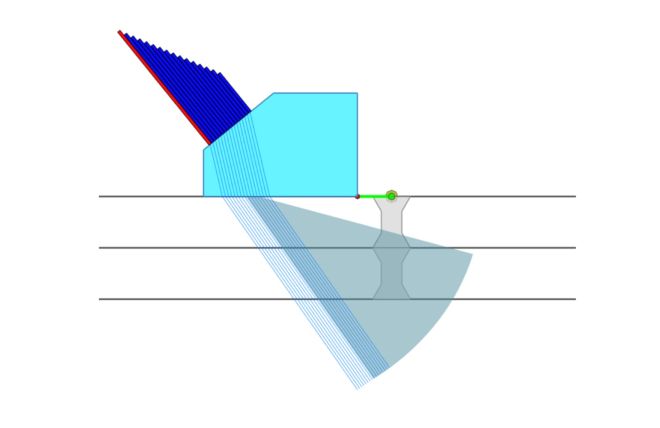- Educational Notes
Different Types of Focusing
Focusing is a phenomenon in which a maximum level of acoustic energy is concentrated at a given point. There are various types of focusing methods - constant path, constant depth, constant offset and natural.

When using the phased array technique for performing non-destructive ultrasound inspections, it is possible to control several parameters, such as the beam angle and focal distance. With these parameters, users can hone in on a given point, creating a region where the imaging is highly accurate. This is "in focus" or "focusing".
Focusing is also a phenomenon in which a maximum level of acoustic energy is concentrated at a given point. Both the beam steering and the focal distance are determined by modifying the firing delays on each element of the phased array probe. Hence phased array systems are able to change the position of this maximal energy point by delaying the pulsing sequence of the probe elements. Note that the focal point position can only be changed within the near field of the probe’s active aperture. This is a similar effect as adding a focused wedge to a conventional probe. Therefore, this capability can concentrate the acoustic energy in default-prone areas in order to maximise the sizing and characterisation capabilities.
Download File (pdf, 322.6KB)
Filter by Industry
- Aerospace Aeronautical
- Aerospace Astronautical
- Chemical & Petrochemical
- Oil & Gas
- Nuclear Energy
- Wind Power Renewables
- Transport Network Infrastructure
- Rail
- Military
- Maritime Shipping
- Automotive
- Pharmaceutical
- Mining
- Construction & Infrastructure
- Technology & Research
- NDT Service Providers
- NDT Education